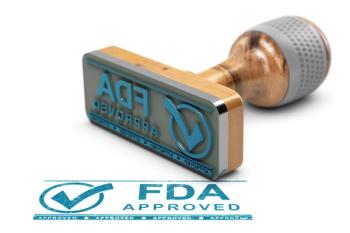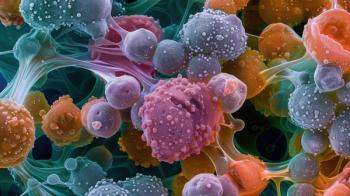
Making Sense of Monoclonal Antibodies
Monoclonal antibodies are a source of confusion for many pharmacists.
The amount of available monoclonal antibodies (—mabs) has increased in the past few years, and their targeted nature is treating everything from cancer to high cholesterol.
Unfortunately, —mabs are a source of confusion for many pharmacists. Their names are long and complicated, and they all sound the same.
As it turns out, —mabs aren’t too bad once you get to know them. They’re named based on an established process, and a –mab’s name actually tells you quite a lot about it.
Let’s break down the nomenclature and discuss a few clinical pearls.
Rule 1
These drugs all end in the suffix “—mab,” so you should know the type of drug when you see it.
Rule 2
The 1 or 2 letters preceding —mab tell you the source of the antibody.
These drugs are made by collecting antibodies from some source, which are then distilled down until there are many, many copies of the same antibody. The source is usually human, mouse, or some combination of the 2.
Here's a quick rundown of the most common prefixes:
- -o-: mouse (all mouse)
- -xi-: chimeric (part human, part nonhuman)
- -zu-: humanized (mostly human, part nonhuman)
- -u-: human (all human)
Rule 3
The 1 or 2 letters before the source tell you where in the body the —mab works. Here’s a quick list of the most common targets:
- -c(i)-: circulatory system
- -k(i)-: interleukin
- -l(i)-: immune system
- -t(u)-: tumor
That’s not an exhaustive list, but it covers most of the —mabs you’ll encounter.
Rule 4
There’s no set nomenclature before the target; drug developers are just asked to provide something that flows well with the rest of the name.
One last thing to mention about nomenclature: how biosimilars are named is still up for debate. The
Because this is a new area, there aren’t many examples. The first biosimilar —mab currently on the US market is infliximab-dyyb (Inflectra).
Clinical Pearls
Now that we’ve covered the nomenclature, how can we use it to our advantage?
For starters, if you encounter a new —mab, you can at least generally determine where it works in the body. If you see alemtuzumab, you know it works on tumors (-tu-) and is derived from a humanized source (-zu-). If you didn’t know evolocumab is a PCSK9 inhibitor, you’d at least know the drug works in the circulatory system (-c-) and is fully human (-u-).
Second, the source of the antibody can be used to predict the risk of infusion reactions.
Even if they’re from a fully human source, —mabs are foreign proteins, so there’s a relatively high risk of infusion reactions during administration. The risk of reaction is highest with the first couple of infusions and the most foreign source, so a chimeric –mab that’s 50% mouse- and 50% human-derived will generally have a higher reaction risk than a fully human –mab.
Here’s a quick rundown of infusion reaction risk based on —mab type:
- —momab (highest risk)
- —ximab
- —zumab
- —mumab (lowest risk)
There are exceptions, of course. The recently-approved daratumumab (Darzalex) has an astounding 48% risk of infusion reaction.
Infusion reactions can be somewhat mitigated by premedication. Often, a combination of acetaminophen and diphenhydramine (plus or minus a steroid like methylprednisolone) are given 30 minutes before infusion.
Managing infusion reactions usually starts with stopping the infusion and administering IV steroids and/or diphenhydramine. From there, the infusion can be restarted at half the rate it was running previously. If patients react again, they most likely shouldn’t be rechallenged; it’s time to consider another therapeutic option.
Finally, don’t forget —mabs have other side effects not related to infusion reactions. Although they’re highly targeted by design, there are still risks. For example, trastuzumab (Herceptin) is an antibody directed at the HER2 receptor used in certain breast and stomach cancers, and it has an up to 34% rate of cardiotoxicity. Meanwhile, bevacizumab (Avastin), an antibody directed at VEGF, can cause hypertension, proteinuria, and even GI perforation.
This only scratches the surface of possibilities for —mabs. In certain areas like oncology, they’re becoming mainstays of treatment. The more we know about –mabs, the more we’ll be able to help our patients and the health care team.
Newsletter
Stay informed on drug updates, treatment guidelines, and pharmacy practice trends—subscribe to Pharmacy Times for weekly clinical insights.


















































































































































































































